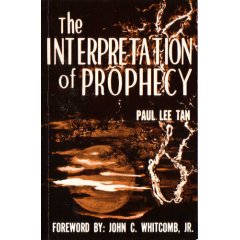
More than a decade ago, a well-meaning acquaintance introduced me to a booklet popularized by the ecumenical, parachurch organization Campus Crusade for Christ. It was entitled, “Have you made the wonderful discovery of the Spirit-filled life?” This booklet gave me an informal introduction to the “Carnal Christian” theory. Within this booklet is a tripartite delineation of man into the “Natural man”, the “Spiritual man”, and the “Carnal Christian” man.
This doctrine is taught in numerous churches, and preached from a myriad of pulpits all over the globe. The theory has a facade of orthodoxy because it is presented in the popular Scofield Reference Bible; it even has the endorsement of the cognoscenti. Unfortunately, the “Carnal Christian” theory is an insidious, pervasive and dangerous ailment.
Patients who succumb to this malady are spiritually ill, but they have a false assurance of salvation. This erroneous theory reassures them that being a Christian does not require submission to the lordship of Christ. This illness is particularly endemic among those who call themselves dispensationalists, although I acknowledge the fact that not all dispensationalists contract this ailment. John MacArthur Jr. of Master’s Seminary, for example, vehemently opposes this heresy.
The sequelae of the Carnal Christian infection cannot be overemphasized. It has produced a generation of “believers” who have no qualms about professing the name of Christ, but at the same time, feels perfectly at home with sin. They may have a theological comprehension of Christ’s atoning death, and the concept of forensic justification, but they are unwilling to submit themselves to the lordship of Christ. They want Christ as their Saviour, but not as their King. They themselves remain the captain of their lives, and the lord of their souls.
These “Carnal Christians” perceive that they are delivered from hell, but not from the power of sin; Christ has redeemed them from the condemnation of the law, but has not given them the power to live in the Spirit. This heretical teaching cultivates a generation of “professors” who presume that holiness is optional for the Christian.
What is the Carnal Christian Theory?
The carnal Christian theory was conceived to accommodate all the supposed converts of contemporary evangelism, which has omitted biblical repentance from its preaching. These converts had “made a decision for Christ”; they had walked an aisle, said a prayer, and perhaps even shed a tear. But their lifestyles and inherent desires are indistinguishable from those with an unregenerate heart. They love the world, and the world loves them. They act like the heathen, live like the heathen, and think like the heathen. Consequentially, a theory must be conjured up to explain the sudden escalation in church attendance and evangelism statistics. Some passages of Scripture must be made to say that such worldly, egocentric and unrepentant “professors” are indeed Christians.
Proponents of the “Carnal Christian” theory advocates a two-experience view of the Christian life. In stage one, a person accepts Jesus Christ as his Saviour, and thus escapes from eternal damnation. After securing this immunity from hell, a person can subsequently decide whether he wants to receive Christ as his Lord. This is only an option though - it is merely the key to a “higher” Christian experience. He can, therefore, choose to disobey the word of God, live a life of rebellion against God’s Word, and yet have Jesus as his Saviour. Such a “Carnal Christian” is believed to “be saved; yet so as by fire” (1 Corinthians 3:15). He will loose his rewards in heaven, but he is absolutely “fire-proofed”.
Classical dispensationalism teaches that repentance belongs to the “dispensation of law”, and not the “dispensation of grace”. Some dispensationalists will argue that if repentance and sanctification are required of Christians, then salvation is not by faith in Christ alone, but also in works. According to this system of hermeneutics, professing Christians who refuse to submit to Jesus as Lord - that is, those who refuse to lead lives characterized by obedience and holiness - are called “Carnal Christians”.
The Carnal Christian theory touches the heart of soteriology and the gospel. It constitutes an essential part of the debate between the “free-grace” proponents and the “lordship” teachers. As the “Carnal Christian” hypothesis confounds the doctrine of sanctification and the understanding of genuine salvific faith, it is a critical error for Christians to address. It does not only have theological ramifications, but is also intimately intertwined with practical Christian living, experience and evangelism.
Charles Ryrie, a “free-grace” teacher, rightly states, “The importance of this question cannot be overestimated in relation to both salvation and sanctification. The message of faith only and the message of faith plus commitment of life cannot both be the gospel; therefore, one of them is false and comes under the curse of perverting the gospel or preaching another gospel (Galatians 1:6-9) …” (Charles C. Ryrie, Balancing the Christian Life (Chicago: Moody, 1969), 170.)
Some Clarifications Regarding Christian Sanctification
I acknowledge that Christians are in different states of sanctification, and that there are many degrees of sanctification. There are babes in Christ, and different stages of “babyhood”. The Bible teaches about sin in a Christian’s life, and that genuine believers can backslide grievously. A Christian can also be carnal in some areas of his life during many stages of his life.
In the Scofield Reference Bible, Cyrus I. Scofield wrote:
“Paul divides men into three classes: “Natural i.e. the Adamic man, unrenewed through the new birth; “Spiritual” i.e. the renewed man as Spirit-filled and walking in the Spirit in full communion with God; “Carnal”, “fleshly”, i.e. the renewed man who walking “after the flesh”, remains a babe in Christ” (Scofield Reference Bible, 1213-1214).
Notice that Scofield divides Christians into two different classes: the “Spiritual” Christian, and the “Carnal” Christian. This entire doctrinal controversy revolves around these questions: Is it true that there is a category of Christians whose entire bent, inclination and leaning is in the direction of carnality? Can a bona fide Christian possess absolutely no desire to submit himself to Christ’s kingship, and persist in his fleshliness?
Basic Principles of Hermeneutics
Before refuting the “Carnal Christian” theory, we shall recapitulate certain salient principles of hermeneutics. Firstly, we believe that there is no real contradiction in Scripture, and that any apparent contradiction can be resolved by comparing Scripture with Scripture. Secondly, obscure portions of Scripture must be interpreted with the clear passages in the Bible. Thirdly, major doctrines must never be formulated from an isolated verse or passage of Scripture. It will soon be clear that the “Carnal Christian” heresy violates all the aforementioned principles of hermeneutics.
To be continued in Part 2





